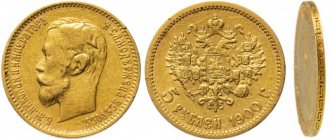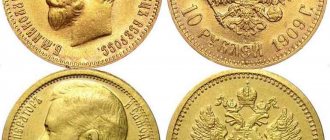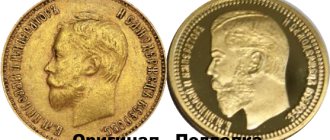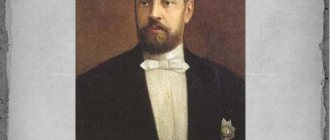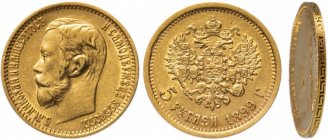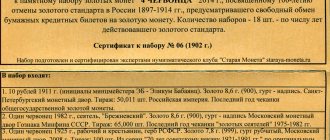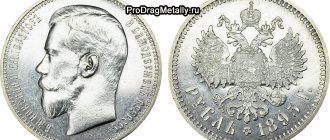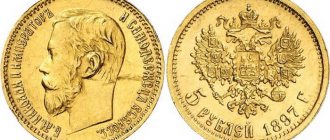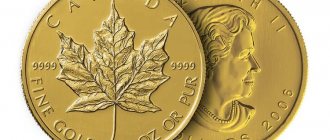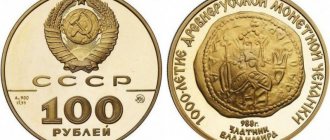When you first see the gold coins of Nicholas 2, you understand that it is impossible to remain indifferent at the sight of such beauty. They attract, delight, amaze.
And there is something to see. Nicholas imperials and semi-imperials, gold specimens in denominations of five, ten and twenty rubles, the last royal chervonets, gift coins of 25 and 37.5 rubles - this is a real extravaganza.
Currency reform and its features
But not only for this reason they arouse great interest. After all, Nicholas 2 is the last Russian emperor, whose reign was marked by transformations in various areas.
Particularly noteworthy in this kaleidoscope of innovations is the monetary reform, begun in 1895 and continued in 1898 by Minister of Finance S. Yu. Witte. He developed its principles, drew up a detailed plan, and in July 1899, at his suggestion, Nicholas II approved a new edition of the monetary regulations, where the ruble acted as the state monetary unit of Russia. Despite the difficulties, the reform took place and brought a lot of new and useful things:
- Paper money circulation was replaced by gold backing, the Nikolaev credit ruble was strictly tied to gold, i.e. monometallism was established in the state.
- Nicholas II completely returned the tradition of portrait coinage, introduced by Peter I. Subsequently, it was abolished by Emperor Paul I. For many years, for various reasons, the abolition was supported by other crowned heads, for example, on gold coins of 1809, instead of the image of the then reigning Alexander I, national symbols were placed. The old custom was partially resumed by Alexander III. And Russia was not alone in this. In the United States, metal money minted from gold over the years also did not contain portraits of presidents or prominent statesmen. Thus, 10 dollars issued in 1898 or 1899 were decorated with the crowned Liberty, and in 1910 - with the head of an Indian in a hat with feathers.
- The weights of precious metal money have changed. The reason is trivial: there was an urgent need to replenish the treasury. The year 1897 became the starting point for all coins, which began to be minted in a lighter version. The exception was the famous imperials and semi-imperials, which retained their previous weight - 12.9 g and 6.45 g. The new coins that replaced them, although they had the same weight, but their denomination was already different: 15 and 7.5 rubles. The weight of the chervonets “dropped” to 8.6 g, and the 5-ruble copy - to 4.3 g.
- An attempt was made to rename the national currency. For this purpose, trial versions of coins in denominations of five, ten and fifteen russ were even prepared. However, Nicholas II did not accept such a replacement.
Russian imperial
The minting of gold coins, called “imperial”, began during the reign of Empress Elizabeth Petrovna (1741-1761). And this is not at all accidental. It was during the reign of the daughter of Peter the Great that industrial gold mining began in Russia, thereby largely eliminating the dependence of Russian mints on imports of the precious metal.
In the mid-1740s, deposits of native gold were discovered in the Urals. Industrial gold mining began, supplying the precious metal to the needs of mints. It turned out that the vein, discovered in 1745 by the peasant Erofey Markov, was unusually prolific. A ton of rock extracted from the mines yielded 450 grams of pure metal. After the mining of ore gold began, deposits of placer gold were also found. All this made it possible to multiply the scale of gold coin production.
On November 12, 1755, the Personal Decree of Elizabeth Petrovna was issued “On the making of gold coins, imperials, half-imperials and red pieces, and the non-issue into circulation of two-ruble gold coins made from 1718 to 1730 with the image of St. Andrew the Apostle,” which legalized the release of a new gold coin ,
So, let's go to the source. I hope that the reader will not be confused by the heavy syllable of the clerical language of the mid-18th century. The decree of the empress said in particular: “We announce publicly... For this reason, We intend to continue to extend Our Motherly care to our faithful subjects to pour out mercy, so that Our gold coins in circulation are established in good order for the benefit of commerce and the far-reaching glory and splendor of Ours. . 88 standard, ten-ruble coin or imperial
, each weighing 3 spools 85\96 shares of a spool, according to the image below in the description with the assignment of prices for them without adding or subtracting it... Description, with what image and inscription gold five and ten ruble coins are made, namely: on one side depicts the Most High portrait of Her Imperial Majesty with the usual inscription, and on the other side there are four cross-shaped shields, crowned with appropriate crowns, on which the coats of arms are depicted: Moscow, Kazan, Astrakhan and Siberian, and in the middle, where these shields meet, the Russian double-headed an eagle, and between the shields there is a year and an inscription all around: Imperial Russian coin, price: on a five-ruble coin - 5, and on a ten-ruble coin - 10 rubles.”
.
G. Buchholz. Portrait of Empress Elizabeth Petrovna in pearls, 1768
Thus, the above decree gave impetus to the release of a new gold coin - the imperial, which was minted intermittently until the end of the 19th century. Initially, the minting of imperial coins was carried out at the St. Petersburg and Moscow mints, and later exclusively at the St. Petersburg Mint.
The Imperial is a fairly large gold coin, with an original weight of 16.57 g and a diameter of 31 mm. Over the course of a century and a half, the weight of the imperial was permanently reduced while maintaining the denomination (only under Nicholas II the denomination was increased to 15 rubles due to the devaluation of the gold coin). Under Elizabeth Petrovna, imperials were minted from 1755 to 1759. Two types of imperial are known, differing in the features of the portrait of Empress Elizabeth. The obverse of the first type imperial (1755-1759) bears a portrait by Benjamin Scott, a Scottish medalist and stamp carver in Russian service.
The contract concluded by the Coin Office in 1747 with this master has survived to this day. The contract was concluded for 4 years. Scott was given an annual salary of 500 rubles, as well as 100 rubles annually for renting an apartment. According to the contract, Scott was supposed to supervise the cutters of the St. Petersburg Mint, supervise their work and cut the coin stamps himself “with all care using the cleanest and most skillful work.” The Scot also had to teach two Russian students. They were future outstanding medalists - Timofey Ivanov and Samoilo Yudin. The contract was concluded with the possibility of extension. On Scott’s part, an oath was taken “as Her Imperial Majesty’s honest and kind slave belongs.”
Imperial. Elizaveta Petrovna. 1756 Portrait by B. Scott
Scott's stamps were used to mint not only imperials, but also some types of ruble coins, chervonets, and memorial medals. Scott's portrait of the Empress depicts Elizabeth as if at a distance from the viewer. According to a number of experts, it is overloaded with small decorative details of the queen’s clothing, which distracts from the main thing - her spiritual image of an enlightened and wise ruler, which should have been embodied in the profile of her face.
The imperial of the second type depicts a portrait of the Empress by Jacques-Antoine Dacier, a Swiss medalist-carver who worked in Russia in 1756-1757. The same master made stamps for the ruble coin of 1757. Dacier's portrait differs sharply from his colleague in the shop, Scott. In the center of the composition is a large image of the empress’s profile. On the contrary, details are given secondary importance.
Imperial. Elizaveta Petrovna. 1757 Portrait by J-A. Dacier
The design of the imperial reverse would remain unchanged until the early 19th century. Above in the imperial decree the reader could already get acquainted with the design of the reverse. These are four cross-shaped cartouche shields with the coats of arms of the kingdoms that are part of the Russian Empire in accordance with the imperial title - the Moscow Kingdom (St. George the Victorious, striking a snake with a spear), the Kazan Kingdom (crowned winged dragon), the Siberian Kingdom (sables holding arrows and bow), the Astrakhan kingdom (crown over a crooked eastern sword).
Imperial. Peter III. 1762
The imperials, minted during several months of the short and tragic reign of Peter III in 1762, are no different in technical characteristics from the imperials of his royal aunt, Elizabeth Petrovna. The portrait of the reigning monarch has just changed. Very few imperial coins of Elizabeth Petrovna and Peter III have survived, so these coins are numismatic rarities. It is extremely difficult to determine their price range today, since these coins appear very rarely at auctions (especially Peter III). In October 2021, a 1758 Elizabeth Petrovna Imperial minted by the Red Mint in Moscow left auction for $34,000.
Under Catherine II, 10-ruble imperials were issued in the same traditional design, weight standard and metal standard. Due to the increase in domestic gold mining, the scale of minting has increased significantly. During the reign of Catherine II, this denomination became a full-fledged circulation coin. In 1764, the weight of the imperial was reduced to 13.09 g, while maintaining the denomination. Imperials with new technical specifications were produced until the end of Catherine's reign in 1796. Like other portrait coins of Catherine, imperials are divided into three main types: issue 1762-1765. (portrait with a scarf around his neck), issue 1766-1776. (portrait without scarf) and issue 1777-1796. (late portrait). The author of the obverse portrait stamps was a student of Benjamin Scott, a graduate of the drawing class of the Academy of Sciences, a carver and medalist of the St. Petersburg Mint, Timofey Ivanovich Ivanov (1729-1803).
Imperial. Catherine II. 1762 Portrait “with a scarf” by Timofey Ivanov (in the trim of the Empress’s sleeve – the initials T.I). St. Petersburg
Imperial. Catherine II. 1776 Portrait “without a scarf” by Timofey Ivanov. (in the cut of the Empress's sleeve - the initials T.I). St. Petersburg
During the reign of Paul I, the imperial was not minted. Only semi-imperial was issued.
Under Alexander I, the issue of the 10-ruble imperial coin was resumed. However, its minting was carried out only for 4 years: 1802, 1804, 1805 and 1809. Since the time of the first Elizabethan imperials, the weight norm of this coin has significantly decreased - to 12.17 g (pure metal content - 12 g). The design of the side with four coats of arms did not change, but became the obverse, since instead of the portrait of the monarch on the other side they began to mint in four lines: “STATE RUSSIAN COIN”.
Imperial. Alexander I. 1802
Since 1809, there has been a long break in the coinage of imperials, almost eight decades long. It was resumed only under Alexander III in 1886. The Alexander and later Nicholas imperials have a design similar to the lower portrait denominations - rubles and fifty kopecks - a portrait of the monarch surrounded by the title on the obverse and the state coat of arms indicating the denomination and date of issue on the reverse.
Imperial. Alexander III. 1888
The Alexander Imperial had a weight norm of 12.9 g (with a pure gold content of 11.61 g). The coin was issued annually until 1894. An in-depth inscription was minted on the edge indicating the content of the precious metal and the sign of the mintzmeister.
In 1897, as a result of the monetary reform of Count S.Yu. Witte introduced gold monometallism in Russia. The nominal value of the imperial note decreased by one and a half times. While maintaining the same weight, a new, unusual denomination began to be minted on the coins - 15 rubles. In accordance with the Coin Regulations of 1899, only this new coin retained the name of the imperial - “The gold coin is minted: fifteen rubles (imperial) …”.
Imperial (15 rubles). Nicholas II. 1897
The weight and denomination of the coin was adjusted to the French franc, 15 rubles = 40 francs. According to technical characteristics, the 15-ruble imperial corresponded to the 10-ruble imperial of Alexander III. In total, in 1897, 11 million 900 thousand 15-ruble imperials were put into circulation. In order to reduce the potential dissatisfaction of the population with the forced devaluation of the gold coin, it was previously proposed to introduce into circulation “imperial” coins, consisting not of 15 rubles, but of 15 russ. However, during the reform, the ruble was not changed to Russian, and the matter did not go beyond a few trial sets.
Trial imperial (15 russ). 1895
Imperial (10 rubles in gold). 1896
10-ruble imperials with a portrait of Nicholas II were also minted in 1895-1897. But these small-circulation issues (for example, according to documents, only 125 coins with the date “1896” were made) are classified as donative. The emperor gave such coins as a special gift.
Roman Novozheev
Candidate of Historical Sciences, Associate Professor
Semi-imperials and imperials, coins of 5 and 10 rubles
Among the rich heritage of gold coins of the Nicholas era, certainly interesting in all respects, there are very original and rare specimens.
Semi-imperials, like imperials, continued to be minted by the mint of Nicholas II. They were produced for three years (1895-1897), and the circulation was not particularly widespread. Thus, the annual production of the former was only 36, and of the latter – 125 pieces. Their characteristic feature was the presence of iconic inscriptions on the reverse - “semi-imperial” and “imperial”.
The most popular was the 5 ruble gold coin. In 1897, 1898 and from 1899 to 1911, a huge number of copies were released into circulation. The largest circulation occurred in 1898 - more than 52 million pieces. The coin was minted in significantly smaller quantities in 1910 and 1911: just over 200 and 100 thousand pieces, respectively. And very few copies fell in 1906 and 1907: in the first case - 10 pieces (in honor of the 10th anniversary of the emperor’s coronation), in the second - 109 pieces (of which 100 went to lay the foundation of the Church of St. Olga, and the remaining 9 copies went to the participants of the ceremony).
No less significant is the gold coin of 10 rubles, the circulation of which in 1897, 1898 and from 1899 to 1911 inclusive amounts to millions of copies. Its appearance almost literally follows the shape of the imperial, and its gold content is 7.74 g.
A strange story is connected with the last gold chervonets of 1911. Its circulation is small and the coin can often be found at auctions. This can be explained simply: the counterfeiters took away the stamps for making the royal chervonets. The equipment has not yet been found, which means the minting continues.
At the same time, the fakes are of high quality: their weight, pure gold content and fineness correspond to the original, although differences exist, especially when compared with the gold chervonets of 1899.
By the way, despite the external similarity, it would be a mistake to consider Nikolaev gold coins in denominations of 5 and 10 rubles. imperials and semi-imperials. There are a number of differences between them:
- the presence of key inscriptions on the reverse of the last two;
- difference in weight and pure gold content;
- completely different release periods;
- large discrepancies in circulation.
Therefore, careful inspection is required when purchasing. In addition, the product sold may be counterfeit.
Later they were transformed into other metal banknotes with a face value of 7.5 and 15 rubles, of which almost 17 and 12 million were produced, respectively, in 1897 alone. Their design, weight and size are an exact copy of the semi-imperial and imperial.
Information about other 10 ruble coins:
1. 10 rubles - Imperial 1895 2. 10 rubles - Imperial 1896 3. 10 rubles - Imperial 1897 4. 10 rubles (AG) 1898 5. 10 rubles (FZ) 1899 6. 10 rubles (AG) 1899 7. 10 rubles ( EB) 1899 8. 10 rubles (FZ) 1900 9. 10 rubles (FZ) 1901 10. 10 rubles (AR) 1901 show more...
If you notice any inaccuracies, write about it here: “Book of comments and suggestions.”
To add a photo of a coin to the catalog, send it by e-mail. The condition of the coin does not matter, but it is important that the photo is clear and taken by you personally, and not copied from the Internet. You are not required to have the coin; the photograph can be taken in a museum or anywhere else with the permission of the owner. Please photograph the coin from both sides, and, if possible, the edge. The photo will be posted by the administrator shortly. If you notice a low-quality photo, you can send a replacement. In the letter, we ask you to indicate exactly how authorship should be indicated (your nickname, real name, or not at all). The authorship remains with you, but the photograph can be used within this site for the design of articles, catalogs or directories. Each photo receives our site’s logo, which protects it from distribution beyond the boundaries of this project (but does not guarantee this). If you do not want to place the logo, please let us know. Questions regarding the value or definition of coins will be ignored! Only photos for filling the site are accepted to the specified e-mail.
Photo of a similar coin:
Photo by: Admin Photo location: Exposition of the Goznak Museum “History of Money”
| Denomination: | 10 rubles |
| Year: | 1896 |
| Metal: | Gold |
| Date of issue: | 1896 |
| Standard weight: | 12.90 g. |
| Normal weight clean metal: | 11.61 g |
| St. Petersburg | |
| Standard diameter: | 24.6 mm. |
| Metal sample: | 900 |
| Circulation: | 125 pieces |
| Current market value of the metal: | RUB 49,923 |
| Inscription: “PURE GOLD 2 GOLD 69.36 SHARES (A.G)” |
| Denomination: | 10 rubles |
| Year: | 1896 |
| Metal: | Gold |
| Date of issue: | 1896 |
| Standard weight: | 12.90 g. |
| Normal weight clean metal: | 11.61 g |
| Mint: | St. Petersburg |
| Standard diameter: | 24.6 mm. |
| Metal sample: | 900 |
| Circulation: | 125 pieces |
| Edge: | Inscription: “PURE GOLD 2 GOLD 69.36 SHARES (A.G)” |
| Current market value of the metal: | RUB 49,923 |

